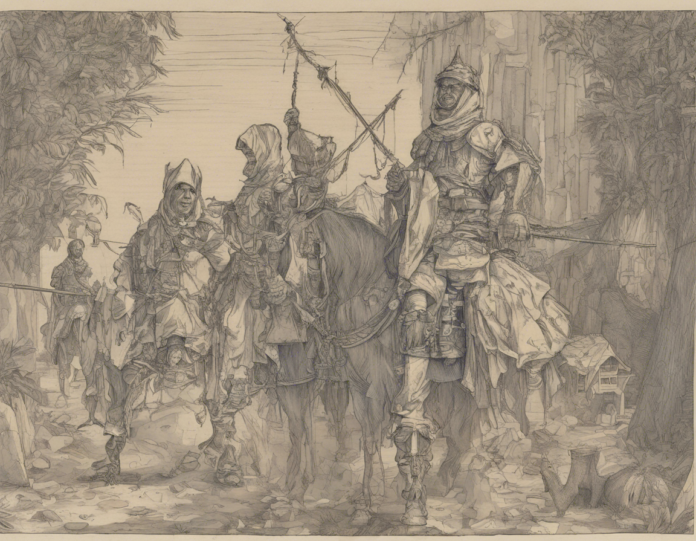In the annals of history, few events are as significant and iconic as the Fall of Constantinople in 1453. This watershed moment marked the end of an era and the beginning of a new chapter in the history of the world. At the center of this momentous event was the Siege of Constantinople led by the Ottoman Sultan Mehmed II, also known as Mehmed the Conqueror. The siege culminated in the capture of the Byzantine capital on May 29, 1453, and the establishment of Istanbul as the new capital of the Ottoman Empire.
The Byzantine Empire and Constantinople
The Byzantine Empire was the continuation of the Eastern Roman Empire, with Constantinople serving as its capital and the heart of its civilization. The city, strategically located between Europe and Asia, had been a bastion of Christian power and culture for over a millennium.
Mehmed II and the Ottoman Empire
Mehmed II ascended to the throne of the Ottoman Empire in 1451 at the young age of 19. He was determined to establish his legacy as a great conqueror and saw the Conquest of Constantinople as a pivotal step towards that goal. Mehmed spent months preparing for the siege, amassing a formidable army and navy to lay siege to the mighty walls of Constantinople.
The Siege of Constantinople
The Siege of Constantinople began in April 1453, with the Ottoman forces encircling the city and launching a relentless assault on its defenses. The Byzantines, led by Emperor Constantine XI, fought valiantly to defend their city, but they were outnumbered and outmatched by the overwhelming force of the Ottomans. The siege was marked by fierce battles, siege warfare, and technological innovations such as the use of massive cannons to breach the city walls.
The Fall of Constantinople
After a grueling 53-day siege, the walls of Constantinople were finally breached on May 29, 1453. The Ottoman forces poured into the city, overwhelming the defenders and sacking Constantinople. Thousands were killed, and many more were enslaved or displaced. The Hagia Sophia, the grand cathedral of Constantinople, was converted into a mosque, symbolizing the end of Byzantine rule and the beginning of Ottoman dominance in the region.
Legacy of the Conquest
The Fall of Constantinople had far-reaching consequences for Europe, the Middle East, and the world at large. It marked the end of the Byzantine Empire and the beginning of the Ottoman Empire’s ascendancy as a major power in the region. The conquest also sparked a wave of cultural exchange and innovation as Greek scholars and intellectuals fled Constantinople, bringing with them ancient texts and knowledge that would fuel the Renaissance in Western Europe.
Frequently Asked Questions (FAQs)
1. Why was the Fall of Constantinople significant?
The Fall of Constantinople was significant because it marked the end of the Byzantine Empire, a major power in the Mediterranean for over a thousand years, and the beginning of Ottoman dominance in the region.
2. How did the Ottomans breach the walls of Constantinople?
The Ottomans breached the walls of Constantinople using massive cannons that were capable of firing large projectiles at the city’s fortifications, eventually creating a breach that allowed Ottoman forces to enter the city.
3. What happened to the citizens of Constantinople after the city fell?
After the Fall of Constantinople, many citizens were killed, enslaved, or displaced as the Ottoman forces sacked the city. The Hagia Sophia was converted into a mosque, and the city’s population underwent significant changes under Ottoman rule.
4. How did the Fall of Constantinople impact Europe?
The Fall of Constantinople had a significant impact on Europe, leading to the spread of Greek knowledge and texts that fueled the Renaissance and shaping the balance of power in the Mediterranean for centuries to come.
5. What is the significance of Mehmed II in the Conquest of Constantinople?
Mehmed II, also known as Mehmed the Conqueror, played a central role in the Conquest of Constantinople. His military strategy, determination, and vision for a new capital in Istanbul were crucial in the success of the siege and the establishment of Ottoman dominance in the region.
6. How long did the Siege of Constantinople last?
The Siege of Constantinople lasted for 53 days, from April 6 to May 29, 1453, before the city fell to the Ottoman forces.
7. What were some of the immediate consequences of the Fall of Constantinople?
Some immediate consequences of the Fall of Constantinople were the conversion of the Hagia Sophia into a mosque, the displacement of the city’s population, and the establishment of Istanbul as the new capital of the Ottoman Empire.
8. How did the Fall of Constantinople change the balance of power in the region?
The Fall of Constantinople shifted the balance of power in the region from the Byzantine Empire to the Ottoman Empire, establishing Ottoman dominance in the Mediterranean and beyond for centuries to come.
9. What impact did the Fall of Constantinople have on Christian Europe?
The Fall of Constantinople had a profound impact on Christian Europe, leading to fears of Ottoman expansion and the need for European powers to unite against the Ottoman threat. It also prompted waves of refugees and the spread of Greek knowledge that fueled the Renaissance.
10. How is the Fall of Constantinople remembered today?
The Fall of Constantinople is remembered as a pivotal moment in history that marked the end of an era and the beginning of a new chapter in the region’s history. It is commemorated in various ways, from artistic depictions to historical reenactments, and continues to capture the imagination of people around the world.


Recent comments